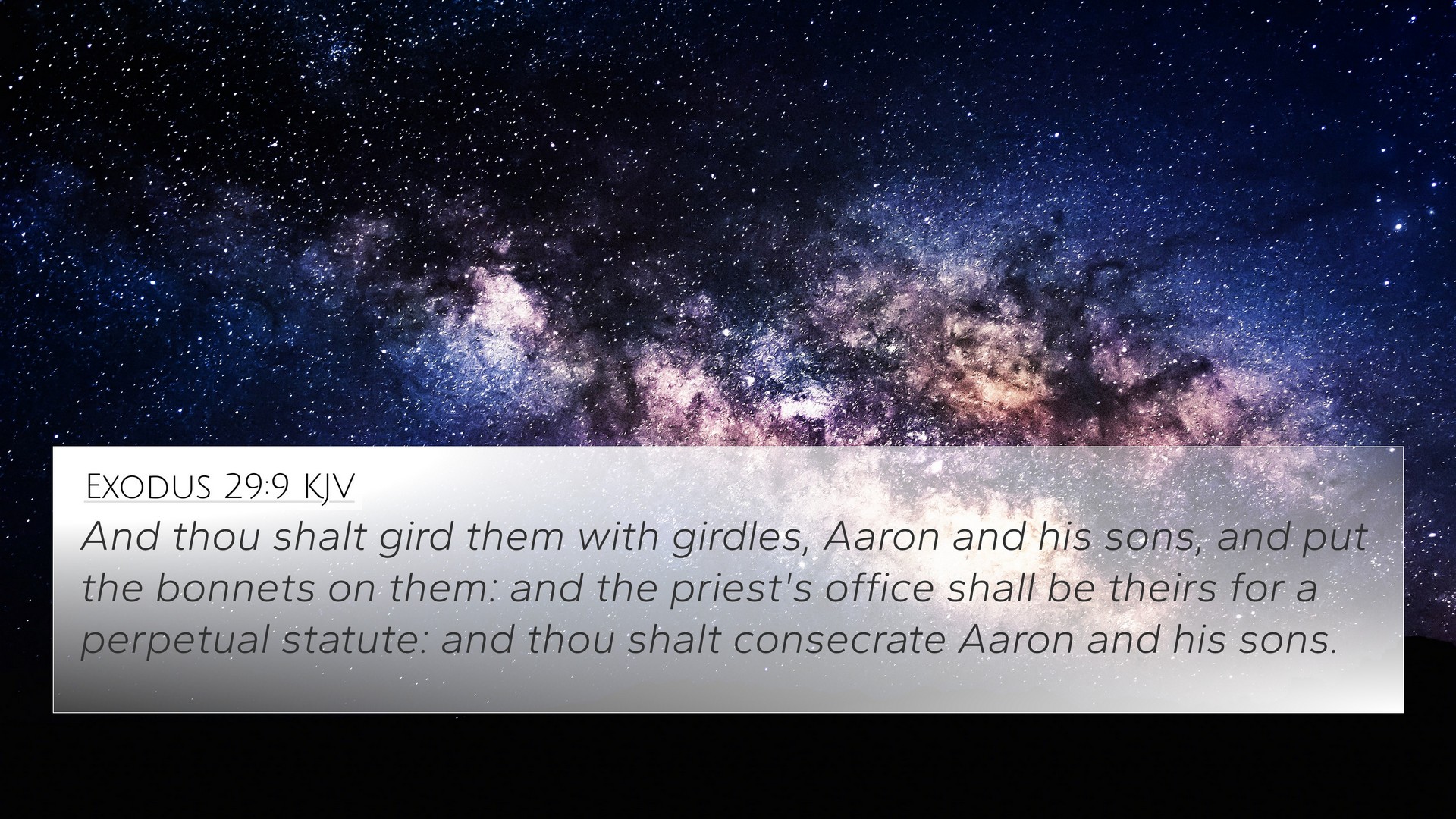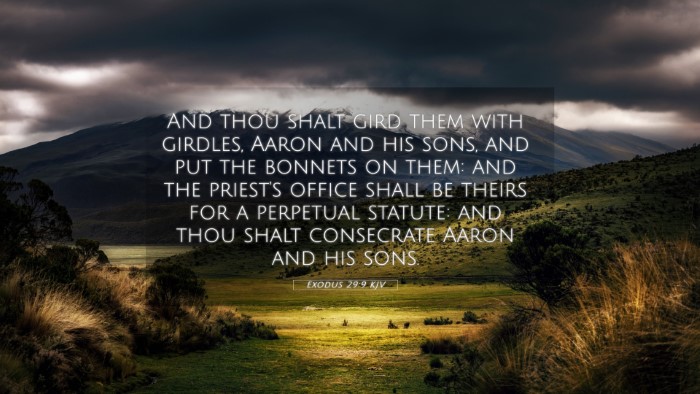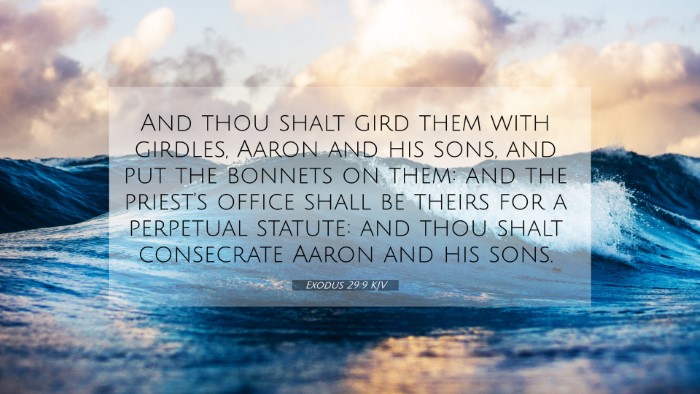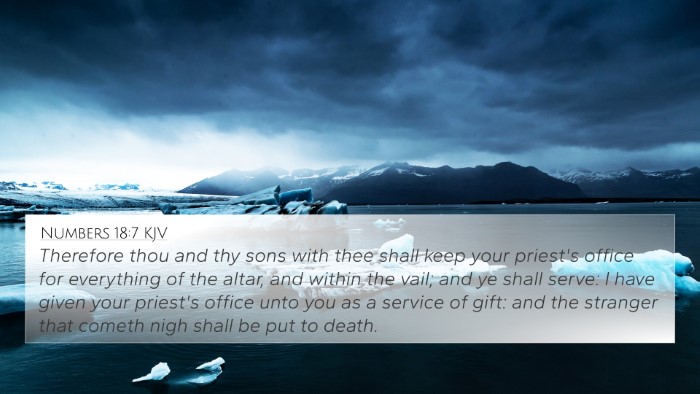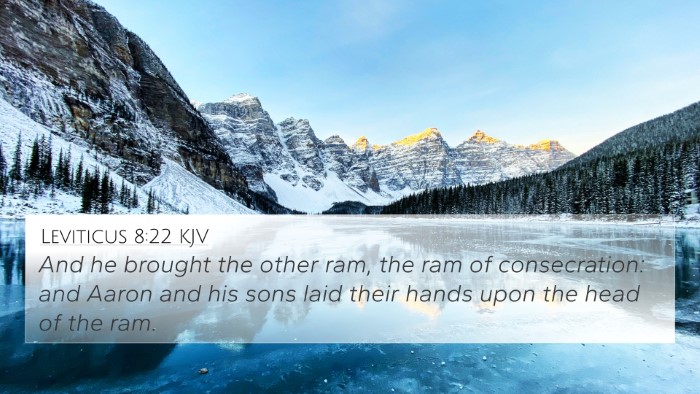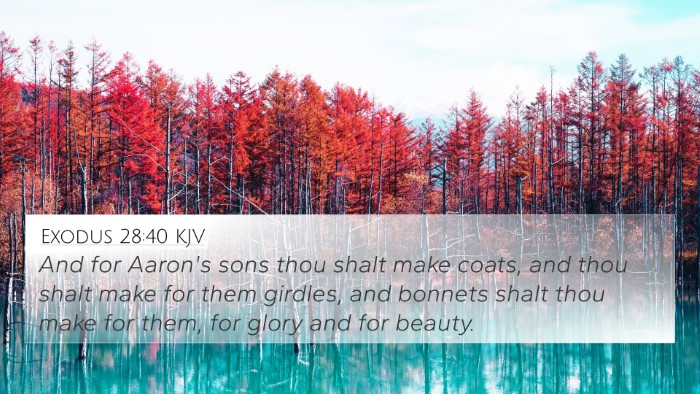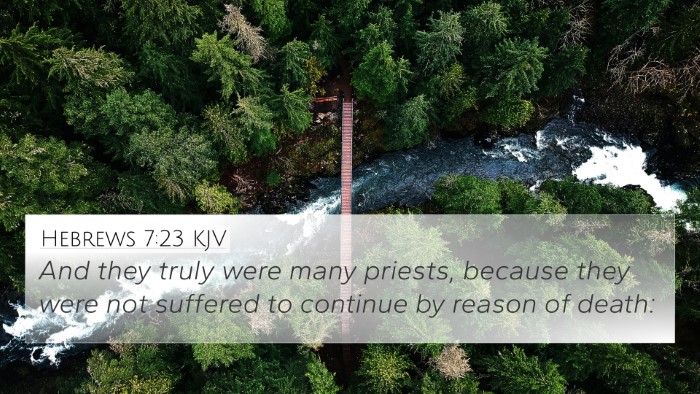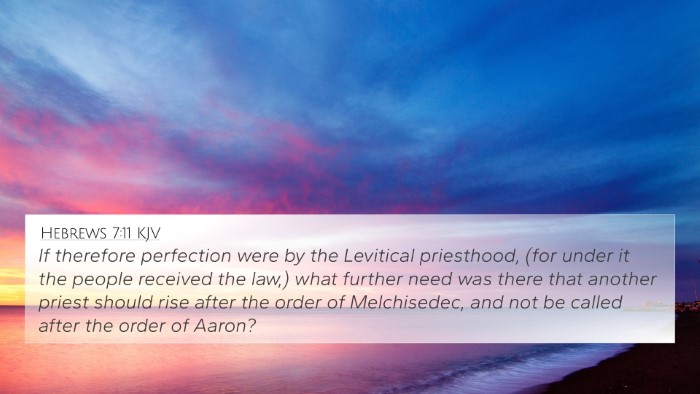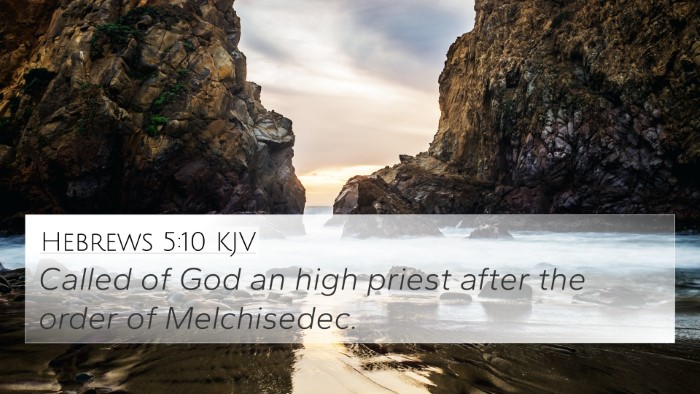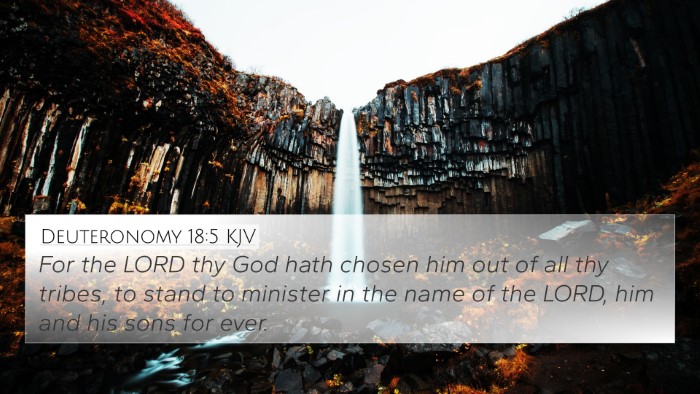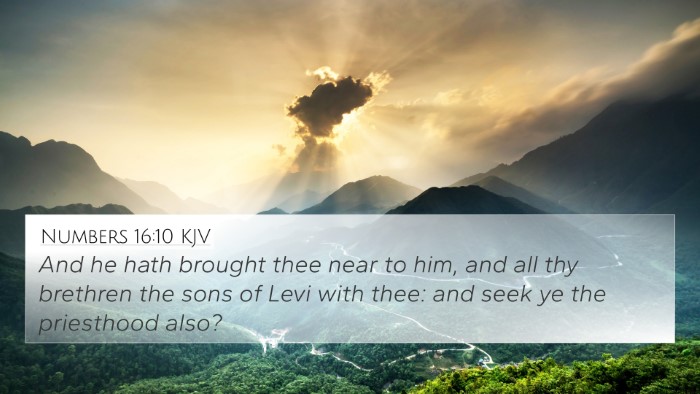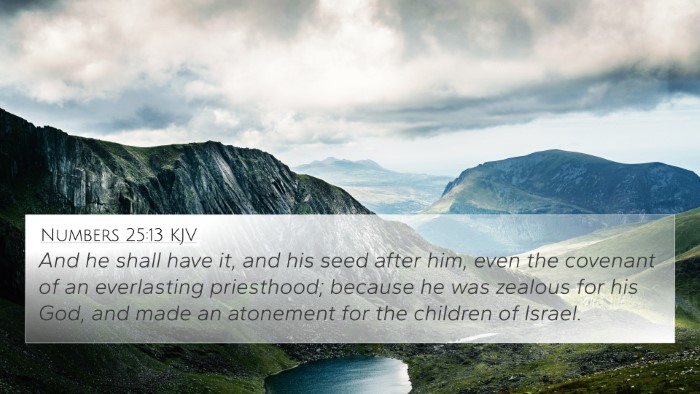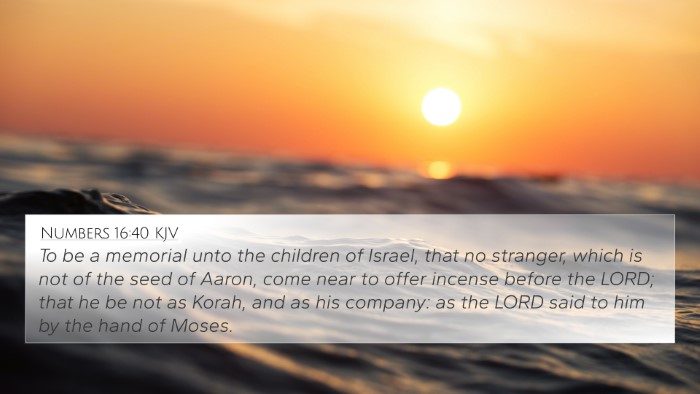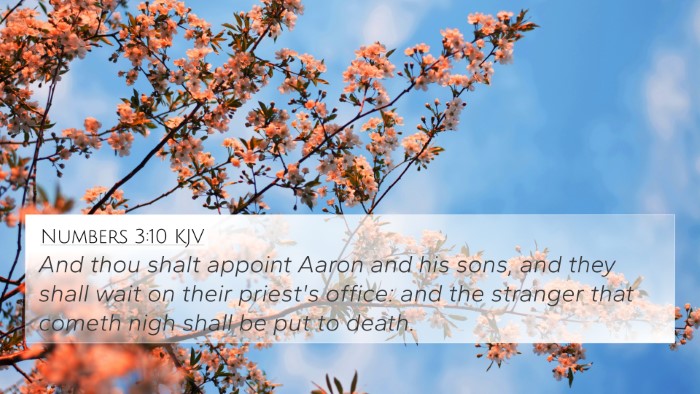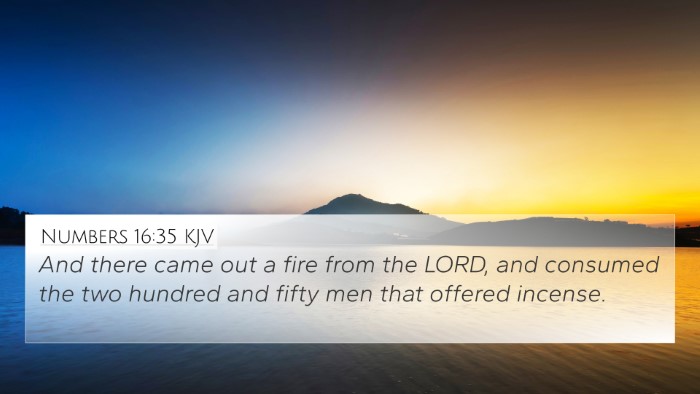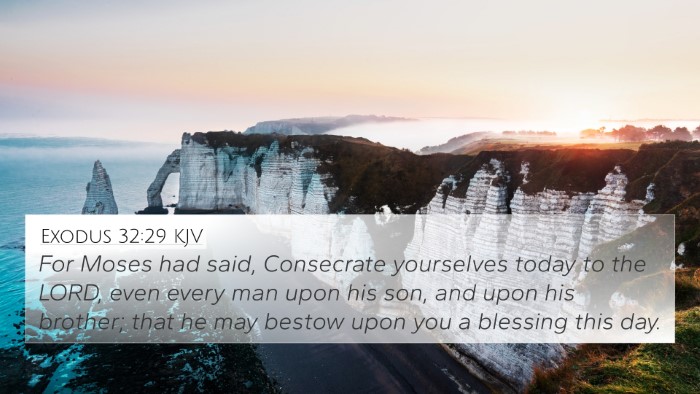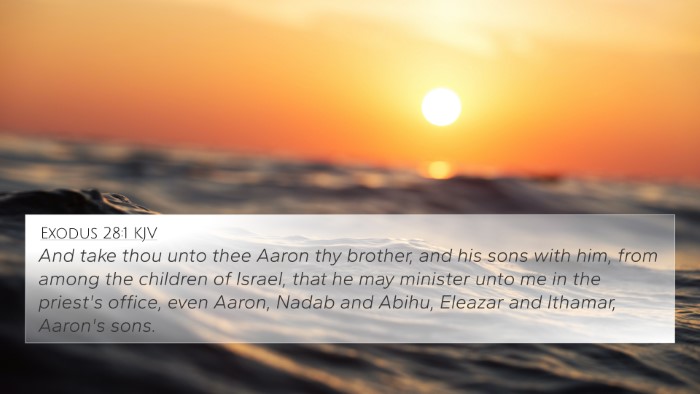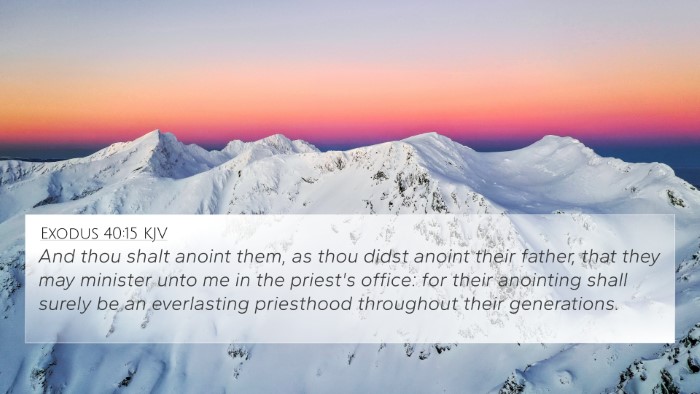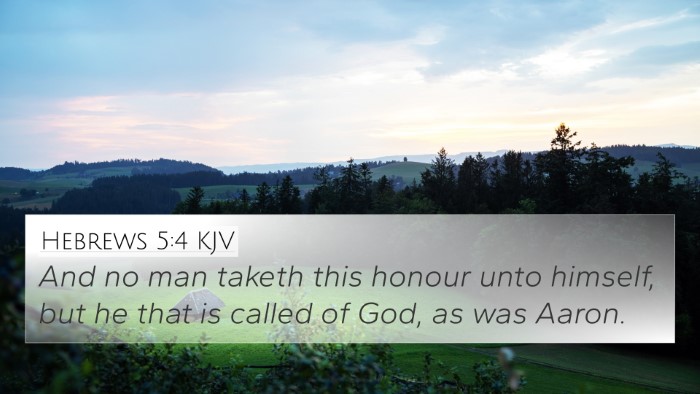Exodus 29:9 - Verse Summary and Meaning
Exodus 29:9 states: "And you shall gird them with sashes, Aaron and his sons, and put the hats on them. The priest's office shall be theirs by a statute forever. So you shall consecrate Aaron and his sons." This verse highlights the sacred process of ordaining the priests and their perpetual role in the service of God.
Understanding the Context
The context of Exodus 29 revolves around the consecration of Aaron and his sons as priests for the nation of Israel. This chapter gives specific instructions on how to prepare and anoint the priests, indicating the importance of holiness and separation for service to God. The ceremonial actions symbolize their dedication and the seriousness of their responsibilities.
Insights from Public Domain Commentaries
-
Matthew Henry's Commentary:
Henry emphasizes the significance of the priesthood as being set apart for sacred duties. He notes how the garments, including sashes and hats, symbolize the dignity and calling of the priests. The eternal nature of their office indicates that this institution was established by God for ongoing spiritual leadership in Israel.
-
Albert Barnes' Commentary:
Barnes discusses the meaning of the priestly garments and their representation of purity and authority. The act of girding with sashes signifies readiness for service, while the hats symbolize their identity and authority as mediators between God and the people.
-
Adam Clarke's Commentary:
Clarke points out that the legislation regarding the priest's office reflects God's desire for a holy people. He notes that the sashes and hats serve both functional and symbolic purposes and that their consecration involved a serious commitment to the covenant between God and His people.
Connections Between Bible Verses
Exodus 29:9 serves as a foundational verse for understanding the role and significance of priests in both the Old and New Testaments. Here are several relevant cross-references that establish thematic connections:
- Leviticus 8:7-9: Describes the garments of Aaron and his sons and their consecration.
- Numbers 3:10: Emphasizes the appointment of the Levites to serve as priests.
- Hebrews 5:1: Talks about the high priest being chosen from among men to represent them to God.
- 1 Peter 2:9: Declares believers as a royal priesthood, indicating the New Testament implications of the priestly function.
- Matthew 27:51: Highlights the tearing of the temple veil, symbolizing the end of the priestly system with Christ's sacrifice.
- Revelation 5:10: States that believers have been made a kingdom and priests, continuing the idea of spiritual priesthood.
- Exodus 28:1: A preceding section detailing the ordination of Aaron as the high priest.
Bible Verse Cross-Referencing and Interpretation
Through cross-referencing biblical texts, one can see the continuity of priestly roles and their deeper meanings across different eras and covenants. Understanding Exodus 29:9 in conjunction with related verses provides insights into God's redemptive plan, illustrating how the Old Testament shadows fulfilled in the New Testament.
Tools for Bible Cross-Referencing
To effectively engage in cross-referencing Bible study, utilizing resources like a Bible concordance or a Bible cross-reference guide can significantly enhance understanding. These tools enable one to explore thematic connections, identify parallels, and navigate between Old and New Testament teachings.
Conclusion
In conclusion, Exodus 29:9 stands as a pivotal point in God's narrative of setting apart a people for Himself. By observing the connections between Bible verses and utilizing Bible cross-reference systems, believers can gain comprehensive insights into the themes of priesthood, sacrifice, and service that flow throughout Scripture.
